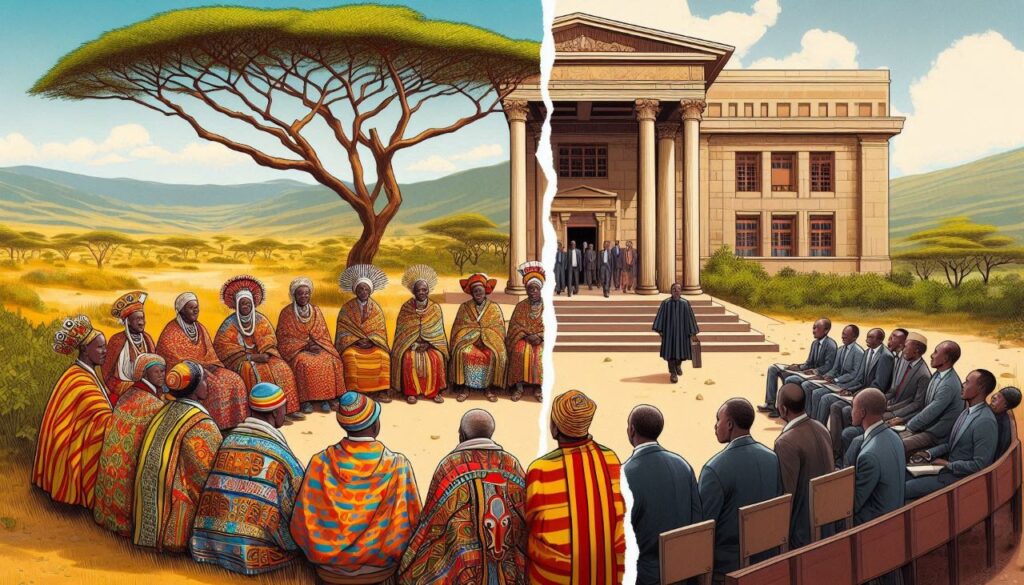
On July 29, 2024, the High Court in Meru ordered the Njuri Ncheke Supreme Council of Ameru leaders to resolve the dispute between the sitting Governor, Hon. Kawira Mwangaza and the County Assembly of Meru. The Court directed the parties to appear before the Council with their advocates by July 31, 2024. This ruling aims to promote Alternative Dispute Resolution (ADR) mechanisms, conserving resources, judicial time, and fostering peaceful co-existence, given this is the fourth motion to impeach the same governor.
Constitutional Considerations for Traditional Dispute Resolution
While this ruling encourages harmonious conflict resolution, it must be critically examined under Articles 159 and 181 of the Constitution of Kenya. Article 159(3) provides the use of Traditional Dispute Resolution Mechanisms (TDRMs) provided they align with the Constitution and principles of justice and morality and result in outcomes that are not repugnant to justice and morality. Article 181 of the Constitution on the other hand specifies the grounds for removing a County Governor. These include a gross violation of the Constitution or any other law, committing a crime under national or international law, abuse of office or gross misconduct, and physical or mental incapacity to perform the functions of office.
Challenges in Applying Traditional Dispute Resolution Mechanisms (TDRMs) to Impeachment Processes
Several issues thus arise on the applicability and efficacy of TDRMs in light of the grounds under Article 181. Impeachment is a public process designed to hold officials accountable and uphold democratic principles. Secondly, Meru County is a cosmopolitan region and has a variety of ethnic groups, cultures, and traditions. These two factors raise questions as to whether justice will not only be done but also be seen to have been done in such a forum, considering that they may have to apply the customary law of the Ameru community.
Courts have previously allowed TDRMs in Kenya. For instance, in Republic vs Mohamed Abdow Mohamed [2013] eKLR, a criminal charge was withdrawn following a settlement between the accused’s and the deceased’s families, sparking controversy over the scope of Article 159.
Several efforts have been made to provide clarity on this subject. For instance, the National Alternative Dispute Resolution Policy addresses challenges related to the unclear scope of ADR. It recommends a Draft Dispute Resolution Bill that proposes a National Dispute Resolution Council to enhance public understanding of ADR and coordination with the formal justice system. With such a Council, public awareness would improve, and the scope of Article 159 would be clearer. Parliament should expedite the enactment of this Draft Dispute Resolution Bill to clarify how such ADR mechanisms work. Additionally, to clarify the scope of Article 159 and set a clear precedent, the national government, any state organ, or county government may request an advisory opinion from the Supreme Court of Kenya under Article 163(6). This opinion would provide authoritative guidance on the application and scope of ADR mechanisms in impeachment processes and other serious matters, ensuring consistency and alignment with constitutional principles.
Balancing Traditional and Modern Justice Systems in Kenya
While the promotion of Alternative Dispute Resolution (ADR) mechanisms, including Traditional Dispute Resolution Mechanisms (TDRMs), is essential for efficient and harmonious conflict resolution, their application must be approached with caution, particularly in cases involving significant public accountability. The integration of TDRMs within Kenya’s legal framework represents a reincarnation of traditional justice systems, adapting and revitalizing them to complement contemporary judicial processes.
This reincarnation must ensure that such mechanisms align with constitutional principles and uphold justice and morality, especially in cosmopolitan regions with diverse cultures and traditions.
Conclusion: The Future of Alternative Dispute Resolution (ADR) in Kenya’s Legal Landscape
By establishing clear guidelines and enhancing public understanding through policies and legislative measures, such as the proposed National Dispute Resolution Council and seeking advisory opinions from the Supreme Court, Kenya can ensure that ADR mechanisms effectively complement formal judicial processes. This careful balance will uphold the principles of justice, transparency, and democratic governance, which are crucial for the country’s legal and political system.
Good job Wakili.
Keep it up
This is wonderful. I think it is time we have a specific legislation drawing the bounds outside which TDRMs cannot be extrapolated.